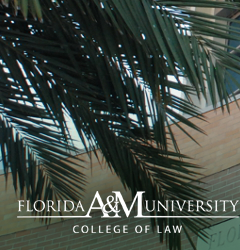Document Type
Article
Publication Date
2016
Abstract
During the brief zenith of school desegregation litigation in the late 1960s and early 1970s, hundreds of school districts across the nation, and particularly across the South, were found liable for intentional racial discrimination and became subject to federal court supervision of approved plans to achieve integration. The period of aggressive enforcement was short-lived however, and by the mid-1970s, and accelerating through the 1980s and 1990s, an increasingly conservative Supreme Court and presidential administrations first slowed the scope and intensity of school integration, and then actively pushed to end judicial enforcement and oversight of existing desegregation cases. This was true even in school districts that remained racially segregated or that had achieved some measure of integration, but had since-and while still under court order become resegregated. Despite the passage of time since these desegregation orders were entered and it is estimated that there remain over 100 school districts still subject to such orders- their legal significance in potentially achieving integration should have increased, especially in the face of Court decisions deifying "intent" in proving discrimination and severely limiting the role of race in student assignment for districts not subject to desegregation orders. This is because of the unique procedural posture of such cases. Under well established school desegregation jurisprudence, once a court finds the school district constitutionally liable for racial discrimination in violation of the 14th Amendment (i.e. that is has operated a racially "dual" system) and a desegregation order is entered, the district has an affirmative duty to remedy the segregation by taking "all steps necessary to eliminate the vestiges of the unconstitutional de jure system." The legal presumption for a school district subject to such an order is that any current racial imbalances within the school system are vestiges of past discrimination. In order to be declared "unitary" and relieved of further court oversight, the evidentiary burden rests with the school board to rebut this presumption and prove that it has remedied the impacts of past segregation to the extent practicable, and to demonstrate that any remaining racial disparities are the result of independent factors unrelated to the board's actions (or inactions). Thus, the distinction between a district still subject to court order and one that has been declared unitary (or was never subject to order) is significant. A district under court order to desegregate may and often must use race-based policies and practices as necessary to fulfill its affirmative remedial obligations under the order, while the much more restrictive and limited consideration of race in schools, as proscribed in Parents Involved, applies only to districts that have never been under court order or that were at one time but have since achieved unitary status." The continuing viability of the bright-line legal distinction between districts under court order with the concomitant burdens of proof and remedial obligations to address the continuing vestiges of racial discrimination-and those that are not was the focus of two recent decisions by the Fourth Circuit in a case that began in the 1960s. In its first opinion, the Court issued a ruling that resoundingly reaffirmed the progressive jurisprudence that helped the nation begin to achieve the promise of Brown and attain a significant measure of school integration. In a subsequent decision in the same case just three years later however, the Court retreated from its earlier holding, blurred the clear line it had previously recognized, and added another substantial setback to the legal struggle to end racial isolation in public schools.
Recommended Citation
Mark Dorosin, One Step Forward, Two Steps Back: Everett et al v. Pitt County School (Everett I and II) and the Ominous Future of Federal Court Desegregation Orders, 67 S. C. L. REV. 713 (2016).
